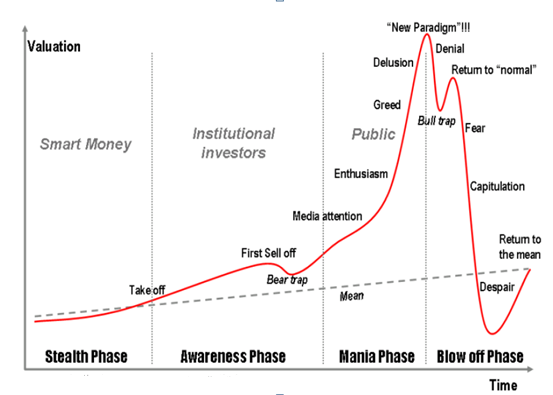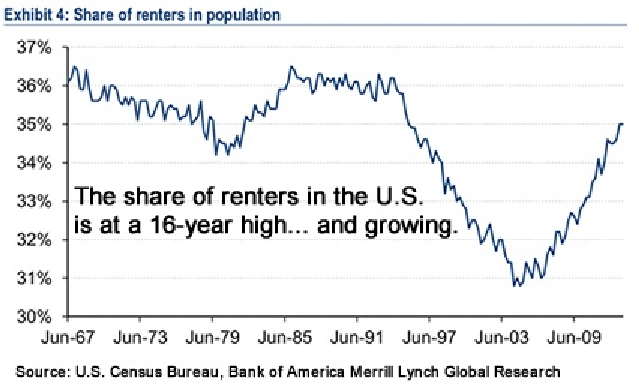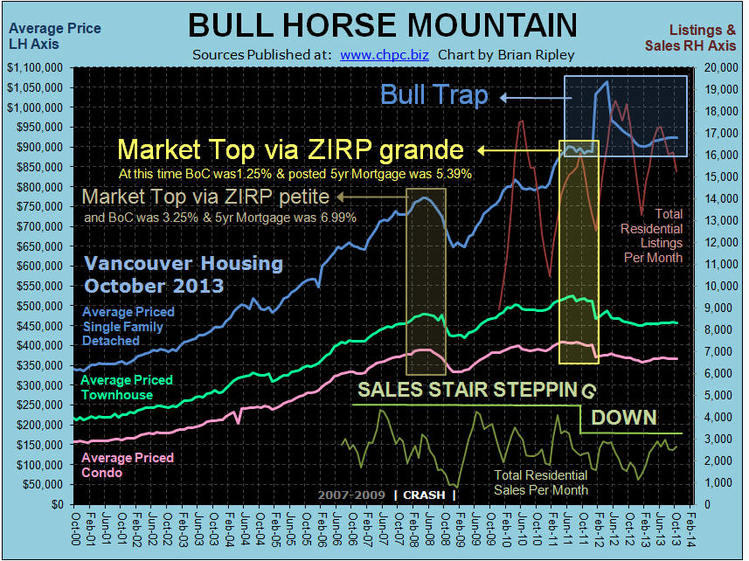Personal Finance
Bubbles are an important cause of economic recessions according to the popular way of thinking. The main question posed by experts is how one knows when a bubble is forming. It is held that if the central bankers knew the answer to this question they might be able to prevent bubble formations and thus prevent recessions.
On this, at the World Economic Forum in Davos Switzerland on January 27, 2010, Nobel Laureate in Economics Robert Shiller argued that bubbles could be diagnosed using the same methodology psychologists use to diagnose mental illness. Shiller is of the view that a bubble is a form of psychological malfunction. Hence the solution could be to prepare a checklist similar to what psychologists do to determine if someone is suffering from, say, depression. The key identifying points of a typical bubble according to Shiller, are,
- Sharp increase in the price of an asset.
- Great public excitement about these price increases.
- An accompanying media frenzy.
- Stories of people earning a lot of money, causing envy among people who aren’t.
- Growing interest in the asset class among the general public.
- New era “theories” to justify unprecedented price increases.
- A decline in lending standards.

What Shiller outlines here are various factors that he holds are observed during the formation of bubbles. To describe a thing is, however, not always sufficient to understand the key factors that caused its emergence. In order to understand the causes one needs to establish a proper definition of the object in question. The purpose of a definition is to present the essence, the distinguishing characteristic of the object we are trying to identify. A definition is meant to tell us what the fundamentals or the origins of a particular entity are. On this, the seven points outlined by Shiller tell us nothing about the origins of a typical bubble. They tell us nothing as to why bubbles are bad for economic growth. All that these points do is to provide a possible description of a bubble. To describe an event, however, is not the same thing as to explain it. Without an understanding of the causes of an event it is not possible to counter its emergence.
Defining bubbles
…read more HERE

The rarest commodity on the planet…
If you were asked what the scarcest commodity on the planet was, I am sure many of you would say gold or oil.
But it’s neither of these, nor is it platinum or copper or one of the rare earth metals.
And I know many people will say fresh water, and they’d be close…
But no, land is one of the scarcest commodities on Earth, and for one simple reason… nobody will ever make more of it, yet demand for it is growing at a rapid clip.
While most people wouldn’t think of land as a “commodity,” it is, by definition, one of the scarcest commodities in the world.
Think about it this way… The world’s population is growing by about 200,000 people every day. That’s over a million new people a week crowding into a fixed amount of space to live, work and shop — placing upward pressure on housing, office parks and retail strip centers.
That’s exactly why forward-looking mega investors like Warren Buffett are placing big bets on land and buildings.
We tend to associate ultra-rich business tycoons with hard assets like steel and oil, but more often than not, the world’s billionaires have invested the bulk of their wealth in real estate.
Media mogul Ted Turner, for example, owns more than a dozen sprawling ranches from Oklahoma to Montana. This collection spans 2 million acres (an area more than twice the size of Rhode Island), making him one of the nation’s largest private landowners.
Turner’s explanation is simple: “I never like to buy anything except land. It’s the only thing that lasts.”
Sam Zell (No. 110 on the Forbes 400 list with a net worth of $4 billion) made a fortune by investing in commercial office properties. His current portfolio includes housing in China, shopping malls in Brazil and the Waldorf Astoria hotel in Chicago.
Now, let’s be realistic. Most of us don’t have the bankroll to buy an office tower, an apartment complex or a retail shopping center. But I’ve found a group of investments that might just be the next best thing. And now may be the best time in a generation to buy them.
Here’s why…
Millions of people across the country have essentially put the American Dream on hold, becoming renters rather than owning their own homes — a phenomenon I call “Renter Nation.”
Right now, there are nearly 100 million renters in the U.S. — 1 in 3 Americans. And new research estimates that half of all new households this decade will be renters. In fact, Harvard University predicts that as many as 7 million new rental households will form by 2020.
The National Apartment Association and the National Multi Housing Council seem to think the numbers could be much higher. They estimate that 77 million baby boomers may soon consider downsizing… while nearly 80 million 20-somethings will be looking to move out of their parents’ houses and into the rental market as their job prospects improve.
This means almost half of today’s population could turn into renters not too long from now if trends continue.
Just look at how fast the share of renters has already grown in recent years…


There are two ways to invest your money in real estate: you do it yourself, or you do it with others.
Besides public market REITs with their volatile ups and downs like any stock, private syndications in the so-called “exempt market” are becoming quite popular. Syndicating a large piece of real estate i.e. pooling of your money with others to buy larger commercial real estate projects is a great idea – if executed well. It is indeed a proven path for wealth creation – if bought at the right price and managed well.
Not all real estate classes are created equal – and not all operators are equal either – and the not-to-distant recession and collapse of prominent syndicators such as First Leaside, League, Concrete Equities, Shire, Signature Capital or Libertygate, is a case in point.
There are nine typical steps in real estate syndication projects that you must check ! What are they ?
More here: http://www.prestprop.com/2013/11/13/nine-steps-invest-successfully-real-estate-syndicates-lps-private-reits/
In summary: it has to be win/win Are the operator’s profits aligned with yours, the investors i.e. usually at the end on exit? Or are they just growing assets under management, like mutual funds, to gather asset management fees, regardless of asset performance ? Is the NAV realistic ? Are distributions sustainable ?
There are quite a few scams out there .. and many were in the news lately .. but even more exist that just exploit the legal loopholes .. but there are many honest folks too. Use these nine guidelines to distinguish between the honest and the dishonest operators .. and you too can successfully and profitably co-own a larger piece of real estate or a pool of hard assets with others !
Thomas Beyer, is President of the Prestigious Properties Group, an investment group which has transacted over $175M in multi-family real estate over the last decade. The group is head-quartered in Canmore, AB and Vancouver, BC with holdings in W-Canada and Texas. He can be reached at 403-678-3330 or at tbeyer@prestprop.com or via www.prestprop.com.


Notice on the chart above that during the labelled periods ZIRP grande and ZIRP petite, all three Vancouver residential housing sectors sold off in price and total number of residential sales. A significant difference was that during ZIRP grande, single family detached housing diverged from the whole market and produced a false trend change signal and went on to zoom into the blow off phase adding another 20% to the price which has mostly evaporated.
….whole article HERE

Can we finally start learning and changing from Remembrance Day?
Remembrance Day is always highly emotional for me, increasingly so as I mature, reflect back
on my youth and gain new perspective from these memories. So here is my question for
readers: Can we finally start learning and changing from Remembrance Day? Yes.
Before anyone tunes out because they think this article is unsupportive of our Canadian Armed
Forces, let me first share with you exactly where I’m coming from.
My parents were born in 1927 and 1934 in small‐town Holland, each part of large Catholic
families whose fathers were skilled craftsmen. My grandparents had dignity, made enough to
support their families, and wanted exactly what most parents want today: to help their children
grow up healthy, strong and responsible with the best of what each parent and their
community had to offer.
World War 2 changed their lives, along with millions around the globe. Everyone and everything
went into survival mode, there was fear everywhere…all the time. The Nazi German occupation
brought Holland to its knees through a deliberate process of starvation. My mom’s family had
to eat its own cat when there was nothing else; a potato that fell from a farmer’s sack added
substantially to that day’s nutrition. Millions of families on both sides of the conflict
experienced this to one degree or another, and it scarred them for life. Everyone loses in war,
except the bankers and the military‐industrial complex.
New generations were instilled with the fear of scarcity, prejudice, divisiveness and violence.
Hope for the future was nearly extinguished, but the human spirit in its purest and most loving
form is quite literally invincible. This invincible spark holds the key to the change that my title
seeks.
In a recent conversation with a 34 year‐old construction worker who showed up to play pick‐up
basketball alongside his brother at the Eau Claire YMCA, I was taken back to my childhood. This
young fellow told me the story of how he and his brother and their wives immigrated to Canada
four years ago from Latvia, leaving the rest of their families behind. He had a slight smile on his
face the whole time, because he feels so fortunate to live here, but his face burst into an ear‐toear
grin when he mentioned that they recently welcomed a new daughter. He could not
contain his joy when he said two simple words: “She’s Canadian.” I teared up with him.
In an instant I was transported back in time to my humble upbringing in the Village of Oliver in
the South Okanagan. We used to travel across the border to Prince’s in Oroville, Washington
just to save a few dollars on groceries – especially eggs and dairy products. Occasionally the U.S.
border guard would ask if we were Canadian citizens, and my mom could hardly wait for this
question. She would proudly reach into her wallet and pull out her Canadian Citizenship card,
grinning from ear to ear; she even made the stoic border guards smile. Both my parents told me
repeatedly that the day they were sworn in as Canadian citizens was the proudest day of their
lives.
In the summer of 1953, a newlywed Dutch couple named Henry and Cornelia Ruhland boarded
a crude passenger ship headed for Canada. They spoke only their native language; they had
little money in their pockets and had no idea what they were in for. They came to Canada only
for a fresh start and opportunity, not for hand‐outs. They had learned that Pier 21 in Halifax,
Canada was their destination only a few weeks before. In their social circles, everyone agreed
to that they had literally won the lottery. They got to start a new life in the land of heroes, with
space and peace.
Many people from many nations sacrificed their lives and health to stop the genocidal insanity
of the Nazi’s, but it was the Canadian soldiers who did the dirty work on the Dutch coast in the
winter of 1944‐45. They were ill‐equipped but toughened by life north of the 49th Parallel.
Many had volunteered because they believed in the cause of freedom, humanity and the evils
of racial prejudice. They were all wily, courageous and relentless in their determination to fulfill
their mission and return home to their own families, and get back to living.
When Holland was finally liberated in May of 1945, the liberators were Canadians. In Holland,
Canadians are still viewed as heroes. They still call it “The Canadian Summer.”
http://www.thecanadianencyclopedia.com/articles/liberation‐of‐holland
Canadians enjoy a unique reputation globally even today. The men and women and families of
the Canadian Armed Forces have earned that reputation quite literally with their blood, sweat
and tears. On November 11th, show your respect for their sacrifice, but don’t let it stop there,
please. Yes, donate generously and wear the red poppy, but let that be the beginning of the
change, not the end.
At this point, you might doubt that you as an individual can make a meaningful difference, but
that is simply not true. That’s what the war‐mongers want you to believe, but the truth is that
we can all make a difference. Stay with me, because this is important: it starts with all of us
individually, with our own relationship with ourselves.
Before healing can begin, wounds must first stop bleeding. This begins with compassion for and
forgiveness of yourself and it spreads outward from each of us. Next, we must take coordinated
and meaningful actions toward the goal, and this is where big ideas start small and get big very
fast. Scientific studies have proven that it only takes the square root of 1% of a given population
to change any situation. Here in the Calgary area with our population of about 1 million that
means that it only takes about 100 people who focus on changing something to get the ball
rolling. Each of you is literally the seed of positive change – you are powerful!
Gandhi said “Be the change you want to see in the world,” so let’s get off our assets and initiate
some change in respect of global violence, whose worst form is war. Perhaps this is through
your church, a community group, your business or a circle of friends.
Don’t over‐think this, just get started. It doesn’t have to be perfect. It could be meditation,
prayer, posting articles like this on social media, starting the conversation with your inner circle
and letting the great idea of peace spread like a bad idea. Why not open your heart to that
estranged family member or friend?
If you are truly serious about honouring the sacrifice of the men, women and children who died
or have been physically and emotionally scarred by the horrors of war, then DO SOMETHING at
a personal level to reduce conflict and violence in your own circle. When you reduce your own
appetite for conflict and violence of any description you reduce the nation’s appetite for war.
The learning and change that I hope for from this Remembrance Day is that a handful of
ordinary Canadians start exercising more enthusiastically the important virtues of compassion,
forgiveness and collaboration. Amongst other things, the essence of this amazing country called
Canada is compassion and collaboration, innovation and creativity, and tenacity and
unrelenting determination in the face of adversity. Are you up for the challenge? I thought so!
“Be the change you want to see in the world.”
‐ Andrew Henry Ruhland













So, how can individual investors to start cashing in on the Renter Nation phenomenon? A great way is to invest in companies that buy up real estate at bargain prices and essentially become a co-landlord with them as they rent those properties out.
Take Blackstone Group (NYSE: BX), for example, a publicly traded private equity company that’s making some huge land grabs across the country.
In fact, Blackstone is now the largest private real-estate owner in the United States.
In the past few years, the company has poured billions into housing and rental properties. And with housing prices up big in 2013, those bets are looking well-placed and timed.
Earlier this year Blackstone accelerated purchases of single-family homes to capitalize on rising prices, investing $2.5 billion in 16,000 homes and rental units.
But the firm has gone beyond that into much larger property ventures to expand on this winning idea. In August, Blackstone announced a $2.7 billion deal to buy 80 apartment complexes from General Electric (NYSE: GE).
Blackstone’s winning plan? Become one of the nation’s largest owners of houses, apartment complexes, malls and commercial real estate… Generate billions in income as it rents out all those properties to hundreds of thousands of reliable tenants… And finally, sell the properties when prices get high enough to bag a huge profit.
The endgame results in investors being rewarded with giant gains and increasing dividends.
It’s no wonder Blackstone is projected to grow earnings by 33% in 2013, 18% in 2014 and 16% annually over the next five years.
Blackstone is currently yielding 3.7% in spite of shares gaining 76% in the past year. But with nearly $900 million in cash on hand, manageable debt and $546 million in annual free cash flow, there’s plenty of room for future dividend growth.
Action to Take –> So what’s the takeaway? Real estate can be a sound, durable investment. Even if you’ve never considered being a landlord, owning companies that invest in property, like Blackstone, can be the next best thing.
Note: I’ve recently put together a special research report,”Living the New American Dream,” which profiles several companies like Blackstone. These companies are taking advantage of the Renter Nation phenomenon to give investors safe yields of 6.2%, 8.2% or higher. To learn more about this report and other income-generating Renter Nation ideas, click here.